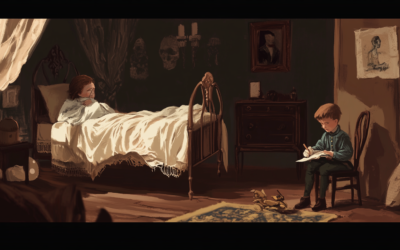Mozart's K 71
A Fragment Shrouded in Doubt and Uncertainty
Mozart’s K 71, an incomplete aria, is yet another example of musical ambiguity. The fragment’s authorship, dating, and even its very existence as a genuine Mozart work remain open to question. With no definitive evidence, how can this fragment be so confidently attributed to him?
Mozart in Italy: The Untold Story
Was Mozart truly a solitary genius, or was he merely the instrument of his father’s ambition? “Mozart in Italy” challenges the conventional narrative, revealing a complex dynamic between father and son that shaped the course of music history. Prepare to question everything you thought you knew.
“In the world of Mozart, certainty is often a luxury we cannot afford.”
Mozart in Italy
Mozart’s K 71, “Ah, più tremar non voglio,” is yet another aria that challenges our understanding of Mozart’s creative process—or, perhaps more accurately, the myth surrounding it. A mere 48-bar fragment, this aria is based on a text by Metastasio from Demofoonte, Act I, Scene 1, yet its attribution to Mozart remains as speculative as ever. Despite being included in the Köchel catalogue, its legitimacy as a work by Mozart is, at best, dubious.
First, there’s the issue of its provenance. No signature or clear indication of the composer exists within the surviving fragment. The only source for the details we have about this piece comes from Johann Anton André, who, in the early 19th century, provided a so-called “completion” of the score. The lack of direct evidence leads us to wonder: if this aria were truly by Mozart, why would he not have signed it as he did with many other works? The absence of Mozart’s autograph casts doubt on its authenticity, yet it continues to be hailed as a Mozart composition in the Köchel catalogue.
Then there’s the troubling issue of dating. Some sources place the aria as contemporary with Lucio Silla (1772), while the Köchel catalogue places it in 1769 or early 1770. The conflicting dates alone should raise red flags. Could Mozart, a composer so meticulous about his cataloging, have forgotten to date this fragment properly? Or are we witnessing a careless inclusion in the canon, more based on the myth of Mozart’s genius than on reliable documentation?
The fragment’s incomplete nature further complicates matters. Only 48 bars remain, suggesting that much of the piece is lost, and the possibility that entire sections of the aria were never written down at all looms large. Furthermore, the aria’s context remains a mystery: was it an unfinished experiment? A discarded attempt at opera seria? Or, perhaps, just a fragment of something more substantial that was never completed or deemed worthy of preservation?
As with many other works attributed to Mozart, K 71 serves as a reminder of how the myth of Mozart often overshadows the reality of his creative output. The incomplete, ambiguous nature of this aria makes us question whether it truly belongs to Mozart at all, or if it’s merely another piece of historical fiction we’ve come to accept because of the composer’s legendary status.
You May Also Like
The Violin Concertos: Mozart’s Borrowed Genius
Mozart’s violin concertos are often celebrated as masterpieces, but how much of the music is truly his? This article delves into the complexities behind the compositions and challenges the authenticity of some of his most famous works, revealing a story of influence, imitation, and misattribution.
#2 The Hidden Truth of Mozart’s Education
In this video, we uncover the hidden truth behind Wolfgang Amadeus Mozart’s early education and challenge the long-held belief in his effortless genius. While history often celebrates Mozart as a child prodigy, effortlessly composing music from a young age, the reality is far more complex.
The London Notebook
The London Notebook exposes the limitations of young Mozart’s compositional skills and questions the myth of his early genius. His simplistic pieces, fraught with errors, reveal a child still grappling with fundamental musical concepts.
The Mozart Question
In this revealing interview, we delve into the lesser-known aspects of Wolfgang Amadeus Mozart’s life, challenging the long-standing myth of his genius. A Swedish journalist explores how Mozart’s legacy has been shaped and manipulated over time, shedding light on the crucial role played by his father, Leopold, in crafting the career of the famed composer.
Georg Nissen and the Missing Notebooks
After Mozart's death, his widow, Constanze, found a steadfast partner in Georg Nikolaus von Nissen, a Danish diplomat who dedicated his life to preserving the composer's legacy. Nissen not only compiled an extensive biography of Mozart but also uncovered and...
Letters Under Surveillance
In a world without privacy, Leopold Mozart’s letters were carefully crafted not just to inform but to manipulate perceptions. His correspondence reveals a calculated effort to elevate his family’s status while avoiding any mention of failure or controversy.







